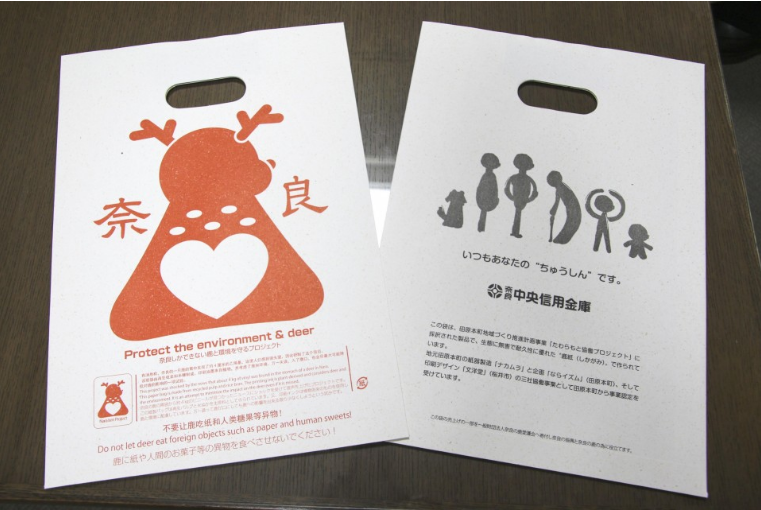For the locals of Nara Prefecture, Japan, plastic pollution is more than an environmental problem; it has affected their sacred deer. To protect the deer, a local entrepreneur invented packaging that is safe enough to eat.
For centuries, the deer have lived peacefully with people visiting and settling in the region. In 1177, a nobleman named Kujo Kanezane of the Fujiwara clan and his family visited the area and encountered a herd of deer. One of the young boys went out of the carriage and bowed down to the deer.
Twelve years later, Kanezame was inspecting a temple that was being rebuilt in the region and encountered a deer in the main hall. At first, he was surprised, then joined his hand together and bowed to the dear. Since then, the local deer were viewed as sacred and a symbol of good fortune.

Today, the deers are viewed as well-mannered and peaceful, with a government designation as a national natural treasure. Nara is also covered with depictions of deer from the train station to the vending machines.
Protecting the Sacred Deer
Hidetoshi Matsukawa works for the local souvenir wholesale company Nara-ism. He had developed a new type of bag called deer paper or "Shikagami" after discovering that the local deer were dying from ingesting plastic bags.
There are nearly 1,000 sacred deer in Nara. Matsukawa said that local tourism is also supported by the deer "and also promote the bags as a brand for the Nara economy." Protecting the deer is equivalent to protecting the local economy, he said. The deer crackers sold nearby do no come in plastic wrapping, meaning that plastic bags likely come from visitors who bring other snacks for the dear.
He and his colleagues designed the deer paper so that it can be safely ingested even by humans. It is made with rice bran, waste from the process of rice polishing, as well as pulp recycled from milk packaging. The bags were inspired by "shika-sembei" which are sugar-free crackers that visitors and locals feed the deer.

Read Also : Eco-Friendly Methods to Clean Oil Spills
Replacing Plastic Bags
The paper packaging easily dissolves in water and is less durable than paper, shared the company. To support the product, the Nara Chuo Shinkin Bank purchased 3,000 paper bags that were given to their clients to use for carrying documents and help spread awareness of the dear-friendly packaging.
The Todaiji temple, a UNESCO World Heritage site and the oldest wooden structure ever built, has also supported the product by purchasing at least 4,000 bags. As more businesses use the bags, said Matsukawa, the price of the product will drop. He hopes that someday, the deer-friendly paper bags will completely replace plastic bags all over Nara.
"The news about the death of deer by plastic bags creates a negative image, as though the park is a cemetery for deer," he said. "The paper bags can protect deer, as well as the brand image of Nara with deer." A percentage of the sales will be donated to the Nara Deer Preservation Foundation.
Check out more news and information on Eco-Friendly Solutions in Science Times.












